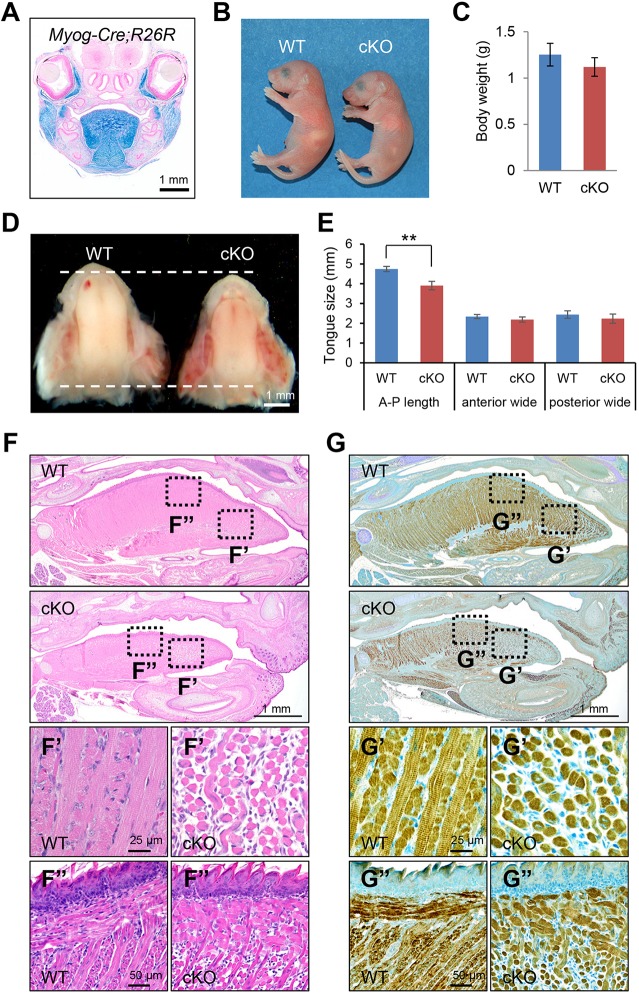Fig. 1.
WNT/β-catenin signaling is crucial for tongue muscle development. (A) β-Galactosidase staining of newborn Myog-Cre:R26R mice. Scale bar: 1 mm. (B) Gross picture of newborn wild-type (WT) control and Ctnnb1 conditional null (cKO) mice. (C) Body weight of newborn WT control (blue bar) and cKO (red bar) mice. (D) Tongues from newborn WT and cKO mice. The dotted lines indicate either the anterior or posterior edge of the tongue. Scale bar: 1 mm. (E) Tongue size for WT control (blue bars) and cKO (red bars) mice in the anterior-posterior (A-P) axis length, anterior wide and posterior wide. **P<0.01. (F) Hematoxylin and Eosin staining of sagittal sections from newborn WT and cKO mice. The outlined areas (F′,F″) from WT and cKO images are enlarged in the lower panels. (G) Immunohistochemical staining for MYH in sagittal sections from newborn WT and cKO mice. The outlined areas (G′,G″) from WT and cKO images are enlarged in the lower panels. Scale bars: 1 mm in A,D,F,G; 50 µm in F″,G″; 25 µm in F′,G′.

